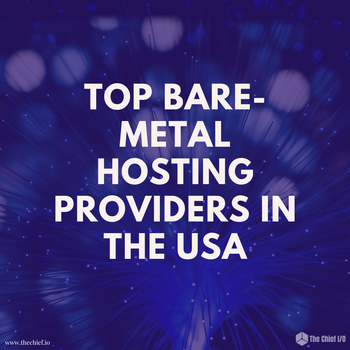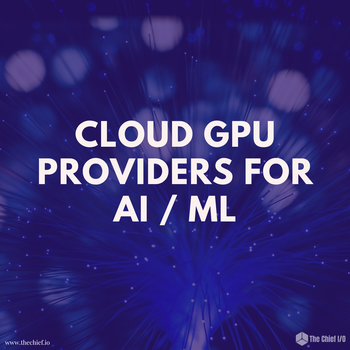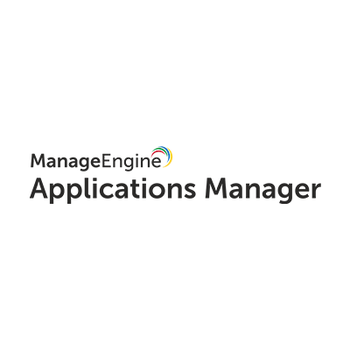The Rise of GPUOps: Where Infrastructure Meets Thermodynamics
in DevOps , Kubernetes , Machine Learning , MLOps

GPUs used to be a line item. Now they're the heartbeat of modern infrastructure.
Welcome to the Age of GPUOps
GPUs used to be a line item. Now they're the heartbeat of modern infrastructure.
Once, you spun one up to test a model. Now, you fight for allocation in shared pools worth more than your annual cloud budget. Clusters run hot, utilization hovers at seventy percent, and still, performance lags. Every job competes for the same scarce power, rack space, and patience.
That's the inflection point. Ops once revolved around servers, pipelines, and uptime. Then came MLOps - data, models, and CI/CD intertwined. Today, we've crossed into something heavier: systems shaped by thermal limits, network fabrics, and queue depth.
You don't deploy GPUs; you orchestrate physics. When a single rack can drain fifty kilowatts, scripts alone won't save you. This is GPUOps - where infrastructure meets thermodynamics, and reliability means keeping both silicon and humans from overheating.
The Shift Nobody Planned For
Between 2020 and 2025, global GPU demand for AI grew over 600%, while data center power use jumped nearly 25% annually, according to the IEA. The tools that defined DevOps couldn't keep pace with machine learning's physical footprint.
Teams that once mastered CI/CD pipelines suddenly faced a new class of problems:
- GPU queues instead of Jenkins queues
- MIG slices instead of VM quotas
- Liquid-cooled racks instead of EC2 instances
A single NVIDIA H100 draws up to 700 watts. A rack of GB200s exceeds 50 kilowatts - about 40 U.S. homes worth of power. Cooling isn't optional; it's survival.
The shift was abrupt. Cloud abstractions met physics. Schedulers started making business decisions. Provisioning stopped being YAML - it became about power, latency, and thermals.
GPUOps emerged to close that gap - a new discipline born from scarcity, complexity, and the need for control.
The Software Reality: Scheduling and Serving
The GPU shortage didn't just inflate prices; it reshaped behavior. Teams stopped buying their way out and started optimizing.
- Kueue and Run:ai make queues first-class citizens.
- MIG and MPS make GPU slicing practical - if your scheduler understands the geometry.
- vLLM and Triton turn serving layers into throughput engines.
Throughput now comes from batching, memory reuse, and caching - not just newer silicon. That's GPUOps: managing scarcity with orchestration, not panic.
| Tool / Framework | Core Function | Operational Benefit |
|---|---|---|
| Kueue | Kubernetes-native job queueing | Fair scheduling, fewer idle GPUs |
| Run:ai | Multi-tenant GPU orchestration | Dynamic allocation, prioritization |
| MIG / MPS | GPU partitioning | Safe multi-job sharing |
| vLLM | Optimized inference engine | Higher throughput via paged attention |
| Triton | Model serving framework | Efficient multi-model serving |
The New SRE Layer
Traditional SREs watched CPU and RAM. GPUOps teams watch everything that burns watts or dollars.
- Utilization per MIG slice
- PCIe and NVLink saturation
- Power and thermal envelopes
- Cost per training hour
- Queue wait times per workload
Telemetry, driver patching, and rollback plans are now reliability work. GPU failures are expected, not exceptional.
The GPUOps Reliability Framework
We imagined this framework to codify what top infrastructure teams already practice - bringing SRE discipline to GPU systems.
1. Observe Everything - Extend observability to GPU metrics: memory bandwidth, kernel errors, thermal throttling. Use DCGM exporters, Prometheus, and Grafana.
2. Define SLOs Around Utilization and Latency - Track GPU queue wait times, inference latency, and per-job utilization. Example SLO: 95% of inferences under 250 ms, >85% GPU utilization.
3. Automate Driver and Operator Lifecycle - Treat drivers like kernels. Test, stage, roll out, and auto-rollback.
4. Manage Thermal and Power Budgets - Tie scheduling to heat and power telemetry. Throttle workloads before racks cook themselves.
5. Quantify Reliability in Cost - Every delay has a price. Measure GPU downtime, queue waits, and driver failures in dollars.
6. Build Resilience Into Scheduling - Use gang scheduling, checkpointing, and preemption to survive volatility.
| Pillar | Focus | Metric | Key Tool |
|---|---|---|---|
| Observe | Telemetry | GPU Memory Utilization | DCGM Exporter |
| Define SLOs | Efficiency | Queue Wait Time | Prometheus + Grafana |
| Automate | Lifecycle | Driver Update Success | ArgoCD / Ansible |
| Manage Power | Thermal | Rack Temp Delta | DCGM / Node Exporter |
| Quantify | Cost | $ per Idle GPU Hour | Finance Dashboard |
| Build Resilience | Scheduling | Checkpoint Success | Kueue / Run:ai |
Cultural and Organizational Shifts
GPUOps isn't a title - it's a mindset. It changes how teams think, communicate, and hire.
You need people fluent in both Tensor Cores and Kubernetes. Infra must speak CUDA; ML must speak SLOs. That fluency becomes operational currency.
This is the next convergence: DevOps met developers halfway. GPUOps meets researchers and reliability engineers in the middle.
Building a GPUOps Culture
Creating this culture is less about tools and more about alignment - shared language, hybrid skills, and accountability across borders.
1. Shared Vocabulary - Everyone should agree on what “utilization,” “throughput,” and “queue time” mean.
2. Dual Literacy Hiring - Hire people who can navigate both cluster ops and model optimization.
3. Ownership by Capability - Assign ownership to outcomes, not systems. Success is efficiency, not uptime.
4. Embedded SREs - Place reliability engineers inside ML teams. Let them co-design workflows.
5. Feedback Loops - Include hardware metrics in postmortems. Latency spikes have physical causes.
6. Executive Alignment - Treat infrastructure as a product. Budget for watts and cooling, not just credits.
| Practice | Benefit | Example |
|---|---|---|
| Shared Vocabulary | Removes silos | GPU metrics workshops |
| Dual Literacy | Builds expertise | Hire SREs with CUDA experience |
| Ownership | Drives accountability | Define success by efficiency |
| Embedded SREs | Aligns ops + ML | One SRE per research pod |
| Feedback Loops | Exposes real bottlenecks | Add GPU telemetry to retros |
| Executive Alignment | Aligns cost + reliability | GPU utilization KPIs |
The Playbook for the Future
To stay ahead, every organization needs a minimal GPUOps playbook - a blueprint for sustainable scale.
- Lifecycle Visibility - Track each GPU's metadata: purchase date, firmware, utilization, and power draw.
- Queue-First Scheduling - Replace ad-hoc requests with fair-share queues and preemption policies.
- Serve Before You Buy - Run optimization cycles before hardware expansions.
- Rack-Level Planning - Plan capacity around power, cooling, and interconnects - not instance counts.
- Patch Discipline - Apply kernel-level rigor to driver and operator updates.
- Vendor Diversity - Design for AMD, NVIDIA, and TPU parity.
GPUOps transforms your GPU fleet from a lucky collection of containers into a coherent, engineered system - measurable, predictable, and improvable.
The Next Layer of Discipline
AI is testing the limits of budgets, infrastructure, and patience. GPUOps isn't a buzzword - it's survival for teams running real workloads.
If DevOps made shipping code repeatable, and MLOps made training models repeatable, GPUOps makes running intelligence repeatable. It's the operational backbone of an era where compute is scarce, heat is a constraint, and every millisecond matters.
The future won't belong to whoever trains the biggest model - but to whoever runs it most efficiently, without burning through watts, dollars, or people.
Get similar stories in your inbox weekly, for free
Share this story:
Latest stories
HIPAA and PCI DSS Hosting for SMBs: How to Choose the Right Provider
HIPAA protects patient data; PCI DSS protects payment data. Many small and mid-sized businesses now …
The Rise of GPUOps: Where Infrastructure Meets Thermodynamics
GPUs used to be a line item. Now they're the heartbeat of modern infrastructure.
Top Bare-Metal Hosting Providers in the USA
In a cloud-first world, certain workloads still require full control over hardware. High-performance computing, latency-sensitive …
Top 8 Cloud GPU Providers for AI and Machine Learning
As AI and machine learning workloads grow in complexity and scale, the need for powerful, …
How ManageEngine Applications Manager Can Help Overcome Challenges In Kubernetes Monitoring
We tested ManageEngine Applications Manager to monitor different Kubernetes clusters. This post shares our review …
AIOps with Site24x7: Maximizing Efficiency at an Affordable Cost
In this post we'll dive deep into integrating AIOps in your business suing Site24x7 to …
A Review of Zoho ManageEngine
Zoho Corp., formerly known as AdventNet Inc., has established itself as a major player in …
Should I learn Java in 2023? A Practical Guide
Java is one of the most widely used programming languages in the world. It has …
The fastest way to ramp up on DevOps
You probably have been thinking of moving to DevOps or learning DevOps as a beginner. …
Why You Need a Blockchain Node Provider
In this article, we briefly cover the concept of blockchain nodes provider and explain why …
Top 5 Virtual desktop Provides in 2022
Here are the top 5 virtual desktop providers who offer a range of benefits such …












